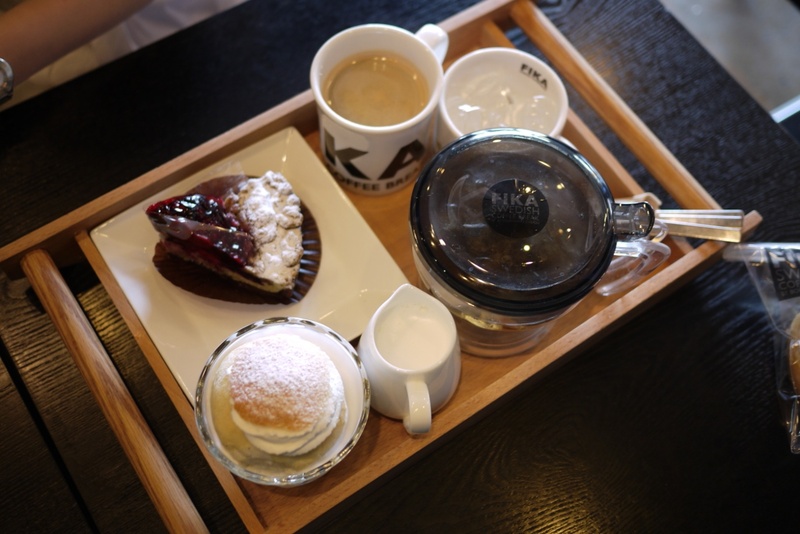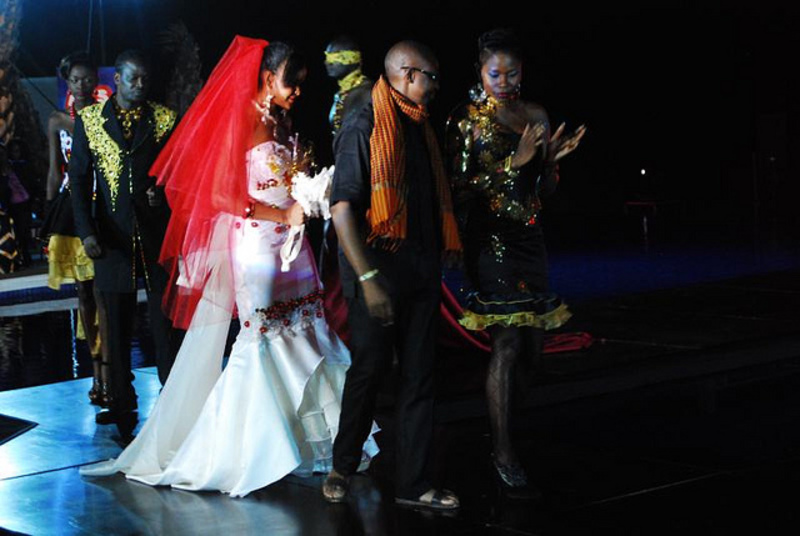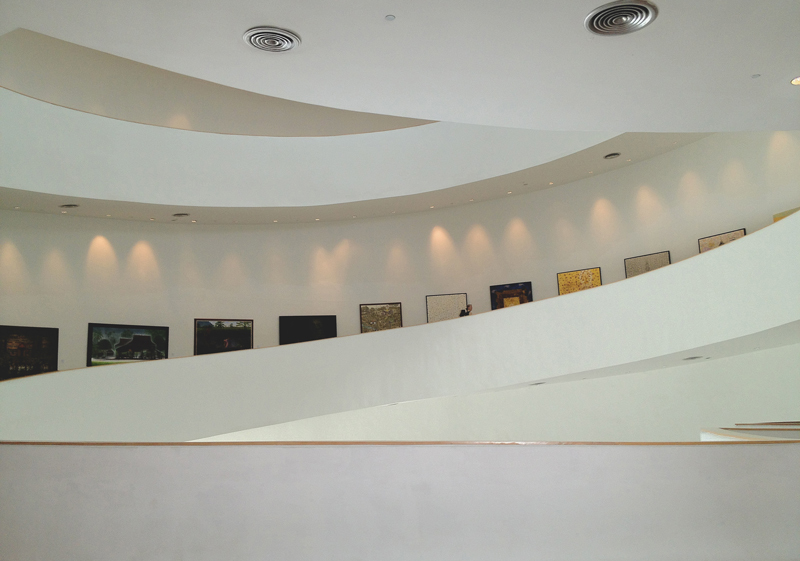Månadens Post
SEEKing Qatar
Publicerat 2008.04.15
Sarah Cooper & Nina Gorfer, Qatar
There was no expression. Not in the way we think of a smile stretching from ear to ear. It was hidden in posture and form: multi layers of sheered black fabric, embroidered edges of gold, white satin draped around heads in the style of a cobra, minimalistic gowns of white cotton1 hanging only a fraction from the floor. There they were, black and white, this surreal scene sweeping past us as we stood waiting for our luggage. Only on a closer look would you notice the spiked two-inch Gucci heels and the Yves Saint Laurent trim on her designer burka2. You would see the young men admiring their reflections, flipping their headscarves slightly to the side for “bling”. Whether 18 or 100 years old, the beauty or corruption of their tradition is in the detail. There was a slightly futuristic feel to that scene, and we suddenly felt under dressed, or even worse, unsophisticated. We had two weeks to tap into a culture that chose to be cloaked.

Beduin camp, photo by Sarah Cooper & Nina Gorfer, SEEK
It was on assignment from the Qatar Foundation that we had come to Qatar, a tiny peninsula on the Persian Gulf with the world’s third largest natural gas reserve. The task was to create a 10-meter long collaborative mural for the newly built Education City in Doha. Just like for any other SEEK project, we started off with a research period to find the essence of this place or at least what we thought it to be. The beginning we spent searching for something that wasn’t really there, a characteristic feature, one that shouts out to you and says, “This is Qatar!”. It was difficult to grasp.

Dune Sheikh, photo by Sarah Cooper & Nina Gorfer, SEEK
Maybe it is because of the unnatural speed of development and change, that this place has not yet been able to define its character. A town so young, that 30 years ago, before the oil and natural gas, there had been nothing but desert. A town so new, that its people don’t yet know how to inhabit it. A town so clean and perfect, at times you wonder whether or not it is real. We thought we would find Bedouins and ruins, camels and covered women, a tackiness like in Dubai. And we found all of this. But what we first could not see, but then came to realize was that Doha, like the rest of Qatar, is in fact the superimposition of two places, its presence ever shifting. This is its essence, two towns, one latent and incorporeal, the other apparent and built.

Light Tunnel, photo by Sarah Cooper & Nina Gorfer, SEEK
First it is the city of the Qatari, the city you see when you arrive: an American skyscraper skyline and structures from the playground of contemporary architecture, side by side with surprisingly charming replicas of ancient white washed Arabic markets and historic mosques. Its built structure, all of it new without the wear of history, literally reflects the struggle between contemporary challenges, and the honorable memory of traditional means.

Workers line, photo by Sarah Cooper & Nina Gorfer, SEEK
Then there is the other city. The non Qatari city of accumulated memory that only exists in the minds of the thousands of Qatar’s temporary inhabitants. Here Pakistanis fly their kites for the festival of Basant and play Cricket in the 50 degree heat of midday. Here Reem seeks comfort in the memory of a place, a place her grandmother described to her in Acre, Palestine – one tree on a hill where the breeze is always fresh. Here Seema who has never talked to a Qatari lady, creates her garden in the image of an ashram in Nepal.
At the moment the first city rules above the second. Sometimes at the expense of cultural variety, the Qataris are trying to preserve their tradition while simultaneously catering to the west. They cling to rules they once made to survive in the desert. But what used to be family bonds to preserve the strength and sustainability of the tribe now creates an almost colonial class like society. The dress that was originally made to cover now serves to distinguish them and their status. We know there is a lot to critique. But in a country where its original inhabitants are a minority3 you also develop an understanding for their quest for preservation. If you look closer, you also realize their profound vision for education and knowledge and a surprising openness to move into an unknown and modern future.
“We are right now building the city of our dreams” one Qatari man said to us. We found this comment rather fascinating. In a perpetual state of literal construction, Doha the capital changes its face day by day where in the end the city we photograph and interview today is not the place of tomorrow. Does this city even look like a real city? We asked. A metropolis suddenly elevated from the sand. What would our dream city look like? Would we honour a collective memory? Can you buy culture if you had unlimited wealth? Would our city even look like us in the end? Would we inhabit or merely admire it?

The Lady, photo by Sarah Cooper & Nina Gorfer, SEEK
The short time we had in Qatar, we spent trying to look at this place from as many different angles as possible, our days filled with interviewing and photographing, always anxious not to miss a potential story, always on the hunt to find that special character. There were the stories from the Lebanese hairdresser of the Emir, who knew when it was time to speak and when it was best to listen. There were the conversations with Ibrahim, the most famous of the Qatari architects, who was full of vision, longing for the day when Qatar would discover its identity. There were the ex-pat workers from Asia, the multitude of them frightening and at the same time fascinating. There was the odd experience of the little old Balinese, who came out of nowhere during one of our shootings, running across the desert to offer us tea and dates on a silver tray. And then there was Asma, all covered, who never shook hands with men and who we imagine to be as beautiful as her eyes.
Two weeks and thousands of images later we left Qatar, knowing that this project would be as surreal and unsettled as the place, its image ever shifting like the dunes, its face left to the imagination like that of a cloaked woman.
Sarah Cooper & Nina Gorfer, SEEK
1) Thub: ankle-length traditional Arabic male dress, white and light in summer, darker and heavier in winter
2) In Qatar the Burka is known as the combination of the abaya (robe), shayla (headscarf) and niqab (face covering).
3) The total population of Qatar is around 908,000, with Qataris making up about 20%.
About SEEK
SEEK is the collaboration between the Austrian, Nina Gorfer, and the Swedish American, Sarah Cooper. Based in Göteborg, Sweden, they are a design studio drawing from their backgrounds in photography, graphic design, art, and architecture. A hybrid studio that chooses to play with and inter-blend the distinctions between design mediums.
Using a fusion of techniques, Sarah Cooper and Nina Gorfer act as directors, writers, adventurers, researchers, photographers, and artists creating conceptual and anthropological visual narratives about a country or place. The result is a series of astonishingly visual novels in both book and exhibition form. Known as the SEEK Volumes, each project encompasses its own destination with local characters acting in their own stories.
This work along with their commercial design work has achieved substantial critical recognition. In 2007 SEEK was awarded a Design Achievement Award by Adobe and exhibited at the De Young Museum, San Francisco. In addition, their work has been exhibited at Art Basel Miami and Bridge Art Fair in New York. Now in a major solo exhibition, their work, SEEK Volume 01: Iceland will be shown at Kulturhuset Stockholm in May 2008. The exhibition is titled “In a House of Snow”.


